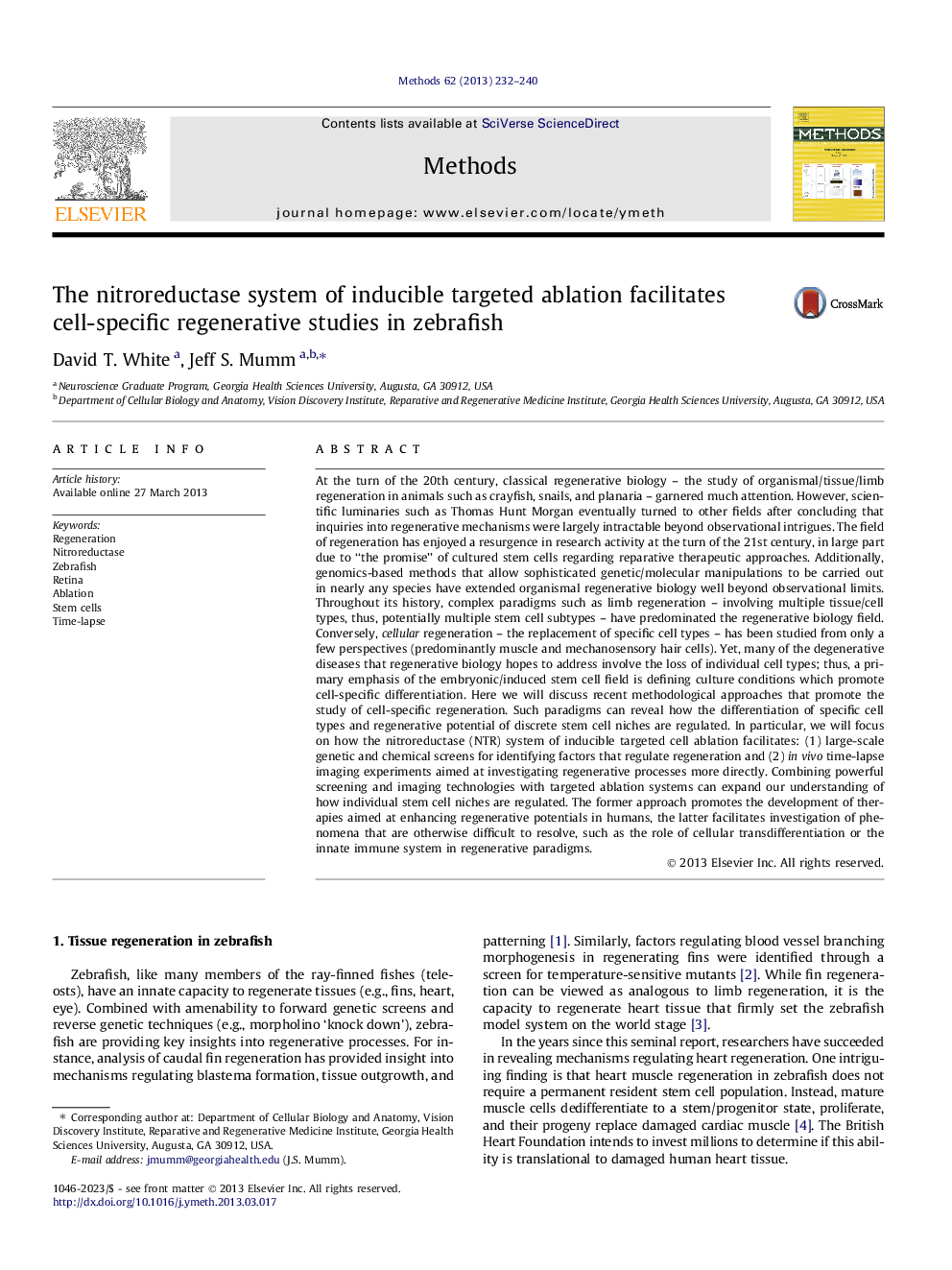| کد مقاله | کد نشریه | سال انتشار | مقاله انگلیسی | نسخه تمام متن |
|---|---|---|---|---|
| 10825870 | 1064681 | 2013 | 9 صفحه PDF | دانلود رایگان |
عنوان انگلیسی مقاله ISI
The nitroreductase system of inducible targeted ablation facilitates cell-specific regenerative studies in zebrafish
ترجمه فارسی عنوان
سیستم نیتروئیدوکسیاز تخلیه هدفمند القا شده، مطالعات بازسازی سلولی را در ماهی های دریایی تسهیل می کند
دانلود مقاله + سفارش ترجمه
دانلود مقاله ISI انگلیسی
رایگان برای ایرانیان
کلمات کلیدی
بازسازی، نیتروئیدکتاز، ماهی قزل آلا، شبکیه چشم، تخریب سلول های بنیادی، زمان گذشت
موضوعات مرتبط
علوم زیستی و بیوفناوری
بیوشیمی، ژنتیک و زیست شناسی مولکولی
زیست شیمی
چکیده انگلیسی
At the turn of the 20th century, classical regenerative biology - the study of organismal/tissue/limb regeneration in animals such as crayfish, snails, and planaria - garnered much attention. However, scientific luminaries such as Thomas Hunt Morgan eventually turned to other fields after concluding that inquiries into regenerative mechanisms were largely intractable beyond observational intrigues. The field of regeneration has enjoyed a resurgence in research activity at the turn of the 21st century, in large part due to “the promise” of cultured stem cells regarding reparative therapeutic approaches. Additionally, genomics-based methods that allow sophisticated genetic/molecular manipulations to be carried out in nearly any species have extended organismal regenerative biology well beyond observational limits. Throughout its history, complex paradigms such as limb regeneration - involving multiple tissue/cell types, thus, potentially multiple stem cell subtypes - have predominated the regenerative biology field. Conversely, cellular regeneration - the replacement of specific cell types - has been studied from only a few perspectives (predominantly muscle and mechanosensory hair cells). Yet, many of the degenerative diseases that regenerative biology hopes to address involve the loss of individual cell types; thus, a primary emphasis of the embryonic/induced stem cell field is defining culture conditions which promote cell-specific differentiation. Here we will discuss recent methodological approaches that promote the study of cell-specific regeneration. Such paradigms can reveal how the differentiation of specific cell types and regenerative potential of discrete stem cell niches are regulated. In particular, we will focus on how the nitroreductase (NTR) system of inducible targeted cell ablation facilitates: (1) large-scale genetic and chemical screens for identifying factors that regulate regeneration and (2) in vivo time-lapse imaging experiments aimed at investigating regenerative processes more directly. Combining powerful screening and imaging technologies with targeted ablation systems can expand our understanding of how individual stem cell niches are regulated. The former approach promotes the development of therapies aimed at enhancing regenerative potentials in humans, the latter facilitates investigation of phenomena that are otherwise difficult to resolve, such as the role of cellular transdifferentiation or the innate immune system in regenerative paradigms.
ناشر
Database: Elsevier - ScienceDirect (ساینس دایرکت)
Journal: Methods - Volume 62, Issue 3, 15 August 2013, Pages 232-240
Journal: Methods - Volume 62, Issue 3, 15 August 2013, Pages 232-240
نویسندگان
David T. White, Jeff S. Mumm,
